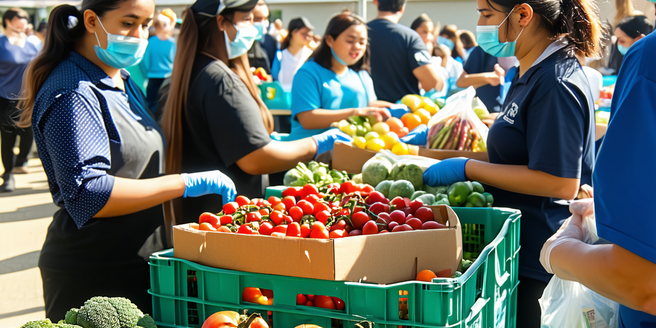Understanding Emergency SNAP Benefits
Emergency SNAP benefits play a crucial role in providing immediate support to individuals and families affected by disasters such as hurricanes, wildfires, and pandemics. This program, part of the federal Supplemental Nutrition Assistance Program, is designed to offer temporary food assistance to ensure that nutritional needs are met in times of crisis. Eligible households may receive an increase in their monthly benefit amount or expedited benefits delivery, allowing for swift access to necessary food resources. The benefits are distributed via Electronic Benefit Transfer (EBT) cards, which can be used at approved retailers. Understanding these emergency provisions helps communities plan better for unanticipated disruptions, ensuring quick and effective relief efforts. As these benefits often depend on the scale and impact of a disaster, coordination between state agencies and the federal government is crucial for proper implementation.
Eligibility Criteria for SNAP During Crises
In times of disaster, eligibility criteria for SNAP benefits are temporarily adjusted to quickly support affected populations. Typically, eligibility is based on factors like income, household size, and expenses. During a crisis, however, those whose livelihoods are disrupted may qualify for disaster-specific SNAP assistance. This often includes individuals who might not normally be eligible for regular SNAP benefits. For instance, disaster-related expenses like temporary shelter costs and damage to property are considered when assessing eligibility. Additionally, the income limit may be adjusted to reflect these extenuating circumstances. This flexible approach ensures that aid reaches those in dire need, helping them secure food during recovery periods. Coordination between state and federal agencies is essential to swiftly identify eligible individuals and distribute aid effectively, minimizing the bureaucratic burden on disaster survivors.
How to Apply for Emergency SNAP Aid
To apply for emergency SNAP benefits during a disaster, affected individuals should contact their local SNAP office or visit the official state SNAP website for specific instructions. Information such as verification of identity, income, residency, and disaster-related expenses may be required. Moreover, applicants might need to fill out a specific disaster SNAP application, distinct from the regular SNAP forms. Many states also offer online application processes to streamline aid delivery, especially when office access is restricted due to the disaster. It’s essential for applicants to act swiftly, as there are often specific enrollment periods tied to the declaration of a disaster. By understanding the application process and requirements, individuals can quickly access necessary food assistance, aiding in their recovery efforts and stabilizing their immediate living conditions post-disaster.
Impact of SNAP on Affected Communities
The implementation of SNAP during disasters significantly impacts affected communities by providing essential nutritional assistance to those in need. By ensuring food security, SNAP reduces stress on families who might be facing sudden financial burdens due to loss of income or property. This immediate support enables them to prioritize other urgent matters like housing, medical care, and rebuilding efforts. Moreover, SNAP benefits bolster local economies by keeping money flowing into grocery stores and food retailers, which might otherwise see reduced business if families had to forgo food purchases. As communities recover, the continued support of SNAP ensures healthier outcomes for individuals, promoting overall community well-being. Understanding its impact highlights the importance of such aid in national and state disaster response strategies, reflecting SNAP’s critical role in relief and recovery processes.
Future of SNAP in Disaster Response Plans
Looking to the future, SNAP is expected to remain a pivotal component of disaster response strategies. Its ability to rapidly deliver food assistance makes it indispensable in addressing nutritional needs during crises. As climate change and global instability potentially amplify the frequency and severity of disasters, enhancing the flexibility and scalability of SNAP will be crucial. There may be developments in technology that allow quicker application processing and benefit distribution, ensuring swift response times. Additionally, improved data sharing between federal, state, and local agencies can enhance the accuracy of benefit distribution, targeting those who need it most. As policymakers consider modifications to disaster response frameworks, extending SNAP’s reach and effectiveness will likely be a key focus, ensuring it adapts alongside evolving challenges and continues to serve as a reliable support system for those in crisis.



